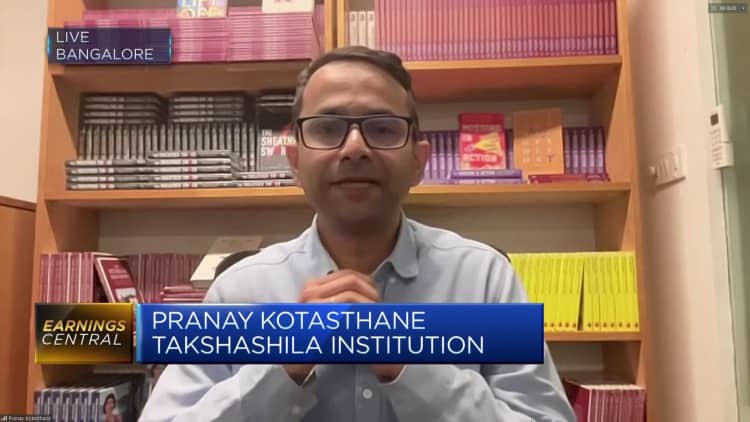A Chinese flag next to a printed circuit board with semiconductor chips.
Florence Lo | Reuters
China’s biggest chipmaker SMIC seems to have been manufacturing advanced chips in the last few months — defying U.S. sanctions designed to slow down Beijing’s progress.
But there are still some major challenges to China’s bid to become more self-sufficient in the semiconductor industry, with questions swirling around the long-term viability of its latest advancements.
What’s the latest?
SMIC is China’s biggest contract semiconductor manufacturer. The nanometer figure refers to the size of each individual transistor on a chip. The smaller the transistor, the more of them can be packed onto a single semiconductor. Typically, a reduction in nanometer size can yield more powerful and efficient chips.
The 7 nanometer process is seen as highly advanced in the world of semiconductors, even though it isn’t the latest technology.
It was a big deal at the time. But last week, the Financial Times reported that SMIC is setting up new production lines to make 5 nanometer chips for Huawei. That would signal even further advancement for China’s biggest chipmaker.
The chips in Apple’s latest high-end iPhones are made on a 3 nanometer process.
Why is this a big deal?
How is SMIC doing this?
Without EUV tools, experts thought, SMIC would find it difficult to make 7 nanometer and smaller chips, or would at least find it expensive to do so.
So when the Huawei Mate 60 came out last year with a 7 nanometer chip, that raised a lot of eyebrows.
One expert told CNBC at the time that SMIC is likely using older chipmaking tools to make more advanced chips.

The FT reported something similar last week. The newspaper, citing two people with knowledge of the plans, reported that SMIC is aiming to use its existing stock of U.S.- and Dutch-made semiconductor equipment to produce 5 nanometer chips, an advancement on the 7 nanometer.
“SMIC is working very closely now with both domestic tool makers, leveraging its existing base of advanced lithography gear, and drawing on other outside expertise, such as from Huawei, to constantly improve yields on advanced node processes,” Paul Triolo, an associate partner at consulting firm Albright Stonebridge, told CNBC via email.
“So for now it is possible for SMIC to continue to improve capabilities and yields at 7 and soon 5 nm, for a small number of customers, mostly Huawei.”
China’s challenges
Using older equipment to make more advanced chips poses two major challenges.
The first is that it’s more expensive to produce the semiconductors than if more advanced tools and machinery were used. The second is an issue around yield — the number of usable chips that are produced and can be sold to customers. With older equipment, the yield is also lower.
The FT also reported, citing three people close to Chinese chip companies, that SMIC had to charge 40% to 50% more for products from its 5 nanometer and 7 nanometer production processes than TSMC does at the same nodes.
TSMC, or Taiwan Semiconductor Manufacturing Company, is the world’s largest and most advanced contract chip manufacturer. TSMC makes semiconductors for companies from Apple to Nvidia.
Pranay Kotasthane, chairperson of the high tech geopolitics program at the Takshashila Institution, told CNBC that SMIC and China could keep throwing money at the process, but ultimately, costs will continue to rise with each more advanced generation of chips — unless the company can get its hands on an ASML EUV machine.
“SMIC might overcome current yield issues by investing more money. This investment might even come from governments as this has become an issue of national prestige,” Kotasthane said via email.
“But the extent of underwriting higher costs will only increase with every subsequent generation of chips. The costs will keep compounding unless China finds a major alternative for EUVs.”